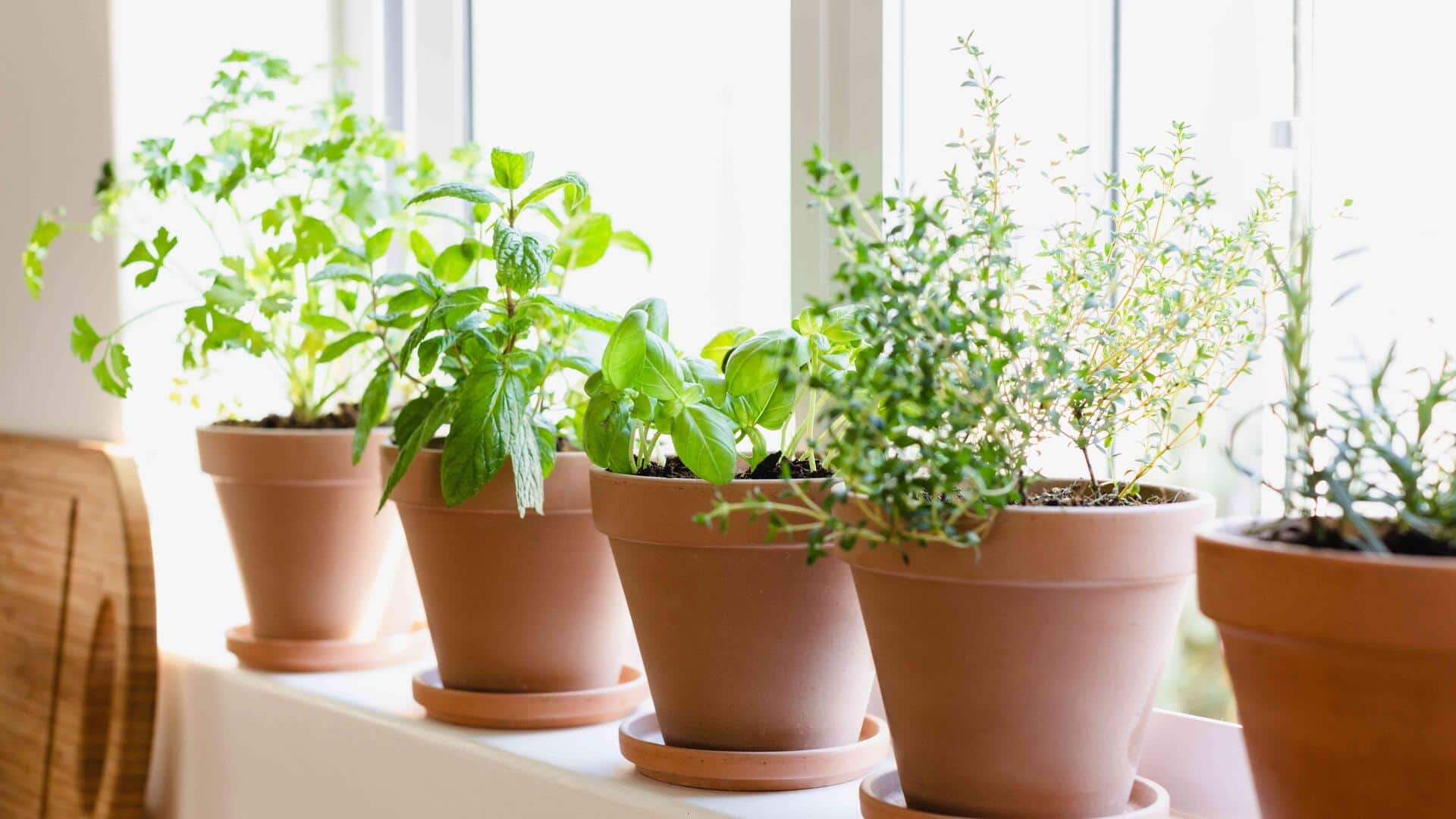
How to grow medicinal herbs at home
What's the story
Growing medicinal herbs indoors is a rewarding and practical way to ensure a steady supply of natural remedies. With the right conditions and care, you can cultivate a variety of herbs that offer health benefits. This guide provides essential tips on how to grow these plants indoors, focusing on light, soil, water, and care. Whether you're an experienced gardener or a beginner, these insights will help you maintain a thriving indoor herb garden.
#1
Choosing the right herbs
Selecting the right herbs is key to a successful indoor garden. Some herbs like basil, mint, and rosemary flourish well indoors. Pick herbs according to your space and light availability. While basil loves bright light, mint can do well in lower light conditions. Knowing each herb's requirements will help you make informed choices that suit your indoor environment.
#2
Providing adequate light
Light is essential for herb growth indoors. Most herbs need at least six hours of sunlight every day. If natural light is scarce, consider using grow lights as an alternative. Place them close to the plants but not too close to avoid burning the leaves. Timers can help automate lighting schedules for consistency.
#3
Using quality soil and containers
The choice of soil and containers is crucial for healthy herb growth. Use well-draining potting mix enriched with organic matter to provide essential nutrients. Containers should have drainage holes to prevent waterlogging, which can damage roots. Choose pots that are appropriately sized for each herb's growth potential.
#4
Watering techniques for healthy growth
Proper watering is key to keeping your indoor herbs healthy. Overwatering can lead to root rot, while underwatering can stress the plants. Check the soil moisture by sticking your finger an inch deep into the soil; water only when it feels dry at this depth. Use room temperature water to avoid shocking the plants.
Tip 5
Regular maintenance tips
Regular maintenance keeps your indoor herb garden thriving. Trim leaves regularly to encourage bushier growth and prevent overcrowding in pots. Keep an eye out for pests like aphids or spider mites, and treat them promptly with natural remedies like neem oil if needed. Fertilize sparingly every few weeks during the growing season with a balanced liquid fertilizer diluted as per package instructions.